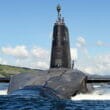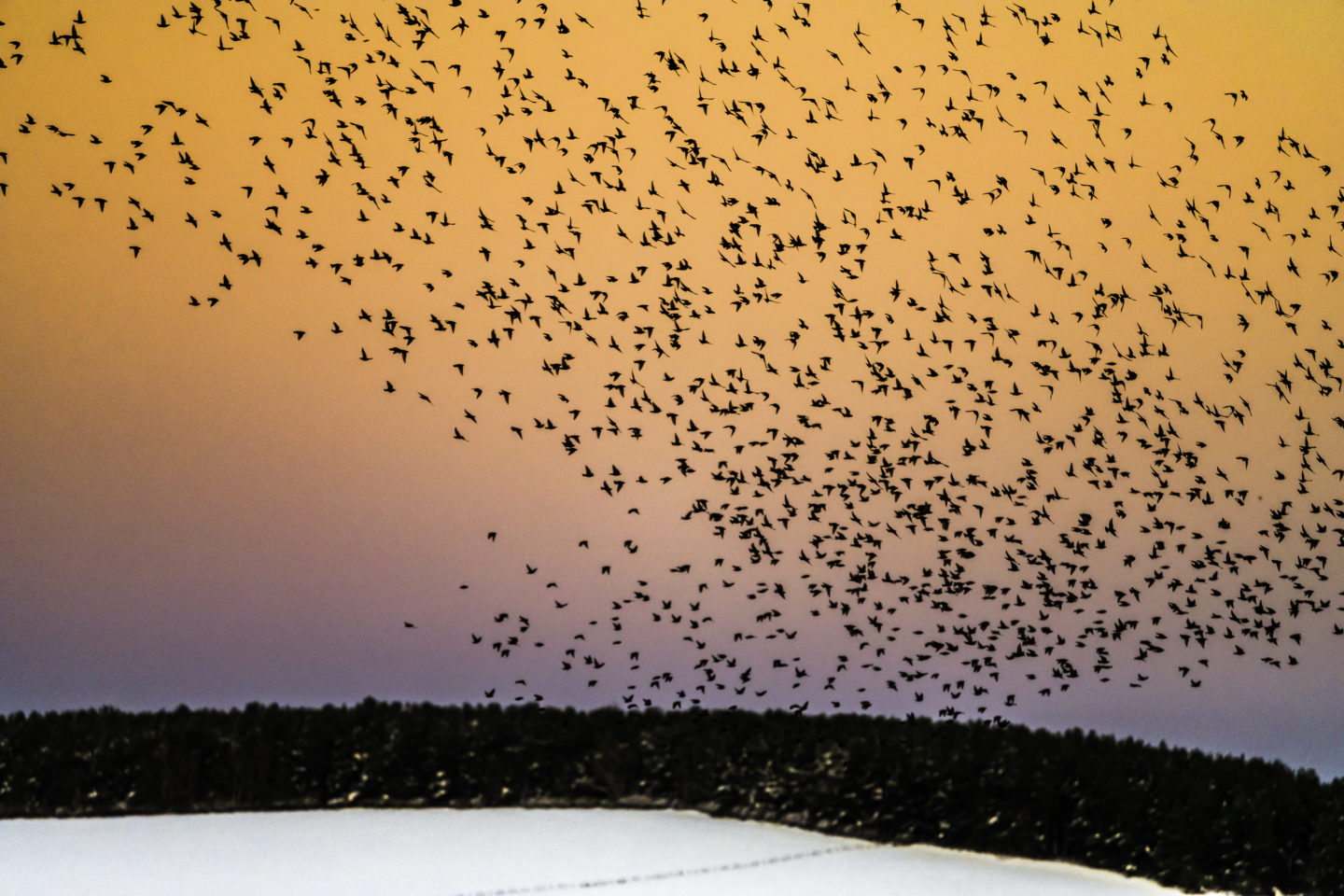The Scottish Government agency responsible for protecting wildlife has licensed the killing of 130,000 wild animals in the last five years, according to official figures obtained by The Ferret.
Since 2014 Scottish Natural Heritage (SNH) has issued almost 4,000 licences to farmers, landowners and others to kill 97,500 geese, 11,400 hares, 10,000 gannets and 6,000 ravens. Hundreds of goosanders, cormorants, jackdaws, starlings, gulls, magpies and pigeons were also allowed to be killed.
The licences covered a total 63 animal species, 51 of which were birds including many familiar species such as sparrows, robins, tits, blackbirds, thrushes, skylarks, swallows, swifts, swans and herons. Other animals on the hit list were beavers, shrews, moths, fish, lizards and toads.
The widespread killings have been condemned as “shockingly high” by animal campaigners, who are demanding tougher controls and greater transparency. The Scottish Greens accused SNH of facilitating “mass slaughter”.
But the culls were defended as “necessary and proportionate” by SNH, farmers and landowners. They stressed that licences were issued as the result of “rigorous” review and did not damage the conservation status of species.
According to SNH, it has refused only 36 applications for species killing licences between 2014 and 2019. The main reasons for granting applications were to protect crops, livestock, and public safety.
Licences were also issued to prevent bird strikes endangering aircraft, for falconry and for scientific research. Up to 2,000 gannet chicks, known as guga, are permitted to be hunted for food every summer on the uninhabited island of Sula Sgeir, 40 miles north of Lewis.
Numbers of animals licensed to be killed in Scotland
Scottish Natural Heritage describes itself as “Scotland’s nature agency” that works “to improve our natural environment”. But it is also responsible for issuing licences for land managers and others to lethally control animals that damage business or put public safety at risk.
In July SNH released a spreadsheet to The Ferret under freedom of information law listing every species licence issued from 2014 to 2019. This gives summary details of numbers and reasons, but it does not give locations.
In total 3,979 licences were issued for the killing of 129,566 animals. But 497 of the licences didn’t specify any numbers, saying that as many could be killed “as required”.
That suggests that significantly more animals were actually licensed to be killed. SNH also asked licence holders to report back how many animals were actually killed once their license had expired, but many of the returns are blank.
The total number of animals reported dead by their killers and recorded by SNH was 62,521. But it’s unclear how many might have gone unreported.
Far more geese were licensed to be killed than any other animal, because of the damage that farmers say they do to crops, particularly on the island of Islay. The licences covered 75,262 greylag geese, 14,383 barnacle geese, 5,048 pink-footed geese and 1,300 Canada geese.
In January 2019 The Ferret published video clips of geese being shot in Islay, prompting allegations that many suffered slow, painful deaths. Farmers on the island receive nearly £1 million a year to compensate for the grasses eaten by tens of thousands of geese.
As many as 7,128 brown hares were licensed to be killed since 2014, mainly by foresters and farmers to protect trees and crops. In June 2019 we reported on concerns that the young of brown hares would be left to starve to death after their parents were killed.
A further 4,341 mountain hares were targeted by landowners to prevent them from damaging trees. Many thousands of mountain hares have also been legally shot without licences to prevent them spreading diseases to grouse shot for sport.
In the last five years SNH has issued 941 licences to kill 6,053 ravens, which are blamed for attacking and killing lambs. SNH is now proposing to allow ravens to be killed under general licences rather than specific licences, which would mean that the number of deaths would go unrecorded.
There were also licences to kill 1,560 goosanders, 777 cormorants, 246 red-breasted mergansers and 37 grey herons. They are fish-eating birds sometimes seen as a threat by anglers.
Amongst other birds licensed to be killed were 530 starlings, 190 house sparrows, 77 swallows, 73 blackbirds and 33 robins. For 14 species, SNH permitted licence holders to “take and kill adults and chicks, destroy nests and eggs”.
In April and May 30 licences were issued to kill beavers, which have returned to Tayside amidst much controversy. Shrews, lizards, toads, moths and fish were killed for scientific research.
The wild animals licensed to be killed by Scottish Natural Heritage
| Species | Number licensed to be killed 2014-19 | Additional licences allowing killing “as required” |
|---|---|---|
| Greylag goose | 75,262 | 8 |
| Barnacle goose | 14,383 | n/a |
| Gannet | 10,000 | 0 |
| Brown hare | 7,128 | 1 |
| Raven | 6,053 | 0 |
| Pink-footed goose | 5,048 | 11 |
| Mountain hare | 4,341 | 0 |
| Goosander | 1,560 | 0 |
| Canada goose | 1,300 | 3 |
| Cormorant | 777 | 5 |
| Starling | 530 | 44 |
| Herring gull | 349 | 5 |
| Magpie | 315 | 7 |
| Woodpigeon | 307 | 7 |
| Feral pigeon | 303 | 10 |
| Natterjack toad | 300 | 0 |
| Red-breasted merganser | 246 | 0 |
| Common gull | 222 | 2 |
| House sparrow | 190 | 33 |
| Buzzard | 104 | 26 |
| Swallow | 77 | 34 |
| Ringed plover | 100 | 1 |
| Blackbird | 73 | 26 |
| Lesser black-backed gull | 84 | 5 |
| Great skua | 80 | 0 |
| Black-headed gull | 71 | 0 |
| Robin | 33 | 26 |
| Swift | 20 | 28 |
| Grey heron | 37 | 8 |
| House martin | 20 | 23 |
| Skylark | 30 | 4 |
| Grey partridge | 25 | 8 |
| Beavers | n/a | 30 |
| New forest burnet | 30 | 0 |
| Common shrew | 20 | 3 |
| Pygmy shrew | 20 | 3 |
| Water shrew | 20 | 3 |
| Lesser white-toothed shrew | 20 | 1 |
| Wigeon | 20 | n/a |
| Blue tit | n/a | 19 |
| Pied wagtail | 1 | 18 |
| Chaffinch | n/a | 18 |
| Common teal | 12 | 5 |
| Oystercatcher | 15 | 1 |
| Pheasant | 2 | 14 |
| Golden plover | 10 | 5 |
| Rook | 5 | 8 |
| Mute swan | 4 | 5 |
| Jackdaw | n/a | 8 |
| Carrion crow | n/a | 7 |
| Greater black-backed gull | n/a | 6 |
| Common lizard | 6 | 0 |
| Any wild bird | n/a | 5 |
| Meadow pipit | 5 | 0 |
| Powan | n/a | 4 |
| Kestrel | 2 | 2 |
| Hooded crow | n/a | 3 |
| Song thrush | 3 | 0 |
| Collared dove | 2 | 1 |
| Barn owl | n/a | 1 |
| Chough | n/a | 1 |
| Great tit | n/a | 1 |
| Sparrowhawk | 1 | 0 |
| Totals | 129,566 | 497 |
The figures reveal the huge scale of licensed killing of specific wild animals in Scotland. But they do not include numerous birds killed by gamekeepers and others under general licences, which don’t specify numbers and don’t record kills.
The figures also omit the large number of animals allowed to be killed outwith SNH’s licensing system. These include deer, grouse, seals, hares, ducks and others.
Shockingly high
The Scottish animal campaigns charity, OneKind, described the list of species killed as “worryingly broad” and “shockingly high”. Some of the species were rare and iconic, it said.
“It is vital that the killing of sentient wild animals should only ever be the very last resort, after all non-lethal interventions have been exhausted and well documented”, said OneKind director, Bob Elliot.
“It is particularly shocking that 30 licences have been granted to kill beavers in the very short time since they gained legal protection. The welfare issues have been well documented and everyone who campaigned for the protection of these harmless creatures will be appalled.”
A previous investigation by The Ferret revealed multiple killings of beavers in Tayside before they were brought under a licensing regime in May. SNH said that no beavers had yet been reported killed, though the licences were still valid.
The Green MSP, Alison Johnstone MSP, is campaigning to curb the killings. “SNH is supposed to protect Scotland’s natural heritage but time and again it seems to facilitate mass slaughter,” she said.
“The Scottish Government must review the provision of licenses to ensure that killing is permitted only as a last resort.”
The Royal Society for the Protection of Birds (RSPB) in Scotland stressed that the numbers licensed to be killed were a minimum. Some species licences didn’t limit how many could be killed, it said, while general licences permitted birds to be killed in unrecorded numbers.
“We acknowledge that there can be circumstances where the licensed killing of wild birds – and other animals – may be necessary,” RSPB species policy officer, Keith Morton, told The Ferret.
“Nevertheless, the sheer scale of the numbers reported here will probably leave many people quite shocked.”
He added: “We have become increasingly alarmed at SNH’s apparent willingness to authorise lethal control on the basis of very slender evidence of harm. The use of many of these licences will not have been subject to much scrutiny, so the reported numbers should maybe be regarded as the minimum numbers killed.”
The Scottish Wildlife Trust stressed that wild animals should only ever be killed as a last resort. “We would strongly support a greater degree of transparency around the numbers and types of licences issued, and the numbers of wild animals killed,” said the trust’s conservation director, Sarah Robinson.
No risk to conservation
The National Farming Union in Scotland argued that the licensing system recognised that a “balance” needed to be struck between nature conservation and agriculture. “Wildlife is protected but the legislation recognises that it cannot be protected in every and all circumstances,” said the union’s policy manager, Andrew Midgley.
“There are times when it is necessary to manage wildlife to avoid negative outcomes for other interests. Consequently, it is possible for SNH to grant licences to prevent serious agricultural damage.”
He added: “It is for SNH to make judgements about the merits of each application, which must pass certain tests, one of which is that the management of individual animals will not have a negative effect on the conservation status of the species.”
Midgley cited SNH’s Islay Goose Management Strategy, which warns that “serious agricultural damage” was caused by geese on the island. “This is a clear example of where wildlife management is needed and all parties are working together to find the appropriate balance between conservation and farming interests,” he said.
Scottish Land and Estates, which represents landowners, maintained that killing licences were necessary to protect livestock, crops, trees or other wildlife. “We also see control of species carried out by non-governmental organisations and environmental charities on land they manage for wildlife and habitat conservation,” said the group’s executive director, Sarah-Jane Laing.
“Licence applications are rigorous and have to be approved by SNH and in many cases will have been through years of discussion with all stakeholders, including conservation bodies, before being granted.”
She added: “They are only granted after non-lethal methods have been shown to be ineffective and the licensing system enables SNH to ensure that there is no risk to the local or national conservation status of a bird or animal.”
Scottish Natural Heritage affirmed that its role was to protect nature. “There are some occasions though when we need to intervene to protect other interests such as damage to farming, forestry and aircraft safety,” said SNH’s spokeswoman.
“These are set out clearly in law. We ensure that any interventions are necessary and proportionate.”
She added: “We are confident that all activities carried out under these licences do not affect the conservation status of any of our native species, and none of the licences issued to wildlife managers relate to endangered species.”
SNH said it granted species licences on health and safety grounds, to prevent serious damage to forestry, economic interests or the environment. Householders, for example, could be licensed to remove birds nesting in boiler flues so they don’t cause a dangerous build-up of carbon monoxide.
In many cases only the nests and eggs of birds were taken, and the adults nested elsewhere, according to SNH. “We work to strike a balance between conserving and protecting species and these other public interests when making licensing decisions,” insisted the spokeswoman.
A small number of licences were given to researchers to kill animals for “science, research or education purposes”, she said. “Applicants must be able to provide clear reasons why killing the animal is justified scientifically, and why there are no viable alternatives.”
SNH confirmed that it had refused 36 applications for specific licences between 2014 and 2019. “In order to provide an efficient public service we work extremely hard with applicants both before and during the application process to ensure that their proposals when progressed to licence applications meet our legal tests,” said the spokeswoman.
“This means that the overall number of licences progressed and subsequently refused is very low.”
The Scottish Government stressed that licences would only be issued “if there are no alternative solutions, and if the proposed action won’t have any detrimental effect on the species population.”
A government spokesperson said: “Reasons for granting a licence include to preserve public health and safety, prevent bird strikes on aircraft at airports, and prevent serious damage to farmers’ crops and livestock.”
This story was corrected on 6 July 2020 after it was pointed out that licences for killing mountain hares were issued to protect trees, not to prevent the spread of disease to grouse.
The full spreadsheet released by Scottish Natural Heritage can be downloaded here. This story was published in tandem with the Sunday National.















130,000 less 97,000 geese = 33,000
What about the 10,000,000 fish that die in Scottish Fish Farms
Talk about putting things in perspective!
Fish are cold slippery things which can’t cry out in their misery. If they had warm furry bodies, big brown eyes and long curly eyelashes there would be hell to pay.
The figures released by SNH may be shocking but they are only a fraction of the number of animals killed under the SNH Licence Scheme. The General Licences are published, ready signed, on the SNH website and all you have to do is read them, follow the guidelines and you can go off and kill unlimited numbers of over a dozen species of native wild birds. You don’t have to ask permission, you don’t have to tell anyone why you are killing the birds and you don’t have to tell anyone how many you kill. At one end of the spectrum there are people with Larsen Traps in their gardens to catch crows and magpies which are then killed by bashing their brains out against a wall. At the other end you have gamekeepers trapping and shooting native wild birds which might eat the non-native pheasants they breed to release into the wild (illegally?) so that sporting guns can shoot the ones that don’t end up as road kill. Under the General Licences it is likely that many more than 130,000 birds are killed annually rather than every 5 years. On Islay the people in charge of the goose killing include the people getting large compensation payments from the £1 million it costs the public every year. When I asked SNH for a copy of the Constitution of the Islay Goose Management Group the answer was they don’t have one!